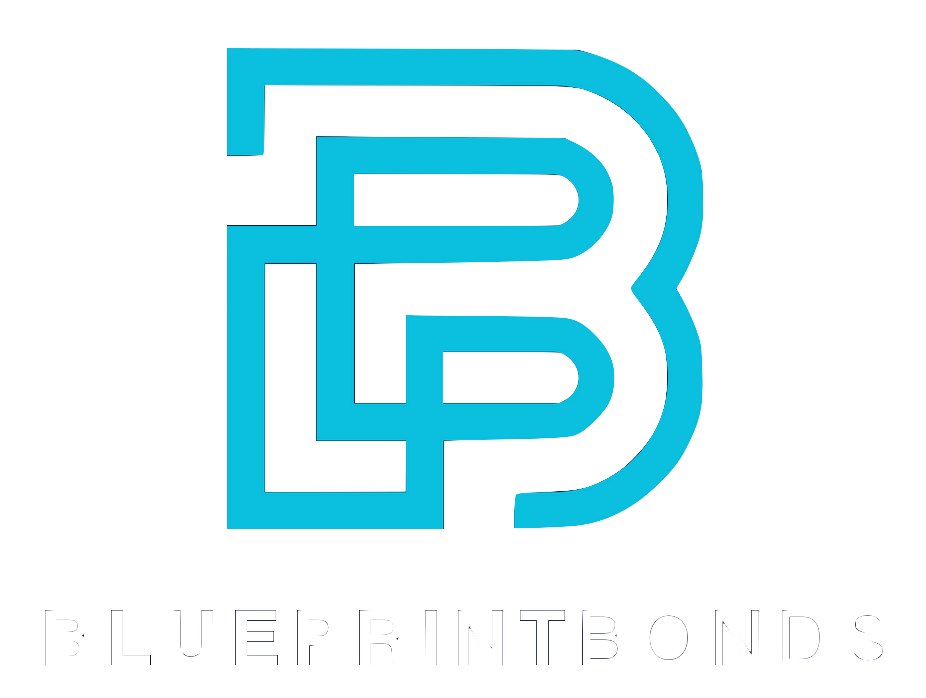In recent years, the mid-market bonding landscape has undergone significant transformation, shaped by evolving regulatory frameworks, shifting investor behaviors, and technological advancements. As the global bonding agent market is projected to grow steadily with a compound annual growth rate (CAGR) of 7.3% from 2023 to 2033, the opportunities and challenges for mid-sized contractors and issuers have become more nuanced than ever before. This article explores the factors driving this dual dynamic—why securing bonds is becoming both easier and more complex for mid-market players—and what it means for stakeholders navigating this critical financial space.
Understanding these trends is essential for contractors, investors, and financial professionals alike. The mid-market segment, often defined by companies that require tailored bonding solutions rather than one-size-fits-all products, is at the heart of this evolution. For those interested in the broader market context, the regional research reports on the bonding agent market provide a comprehensive overview of growth trajectories and market drivers.
Why Mid-Market Bonding Is Becoming Easier
Tailored Solutions and Increased Provider Flexibility
One of the most significant shifts making bonding easier for mid-market contractors is the emergence of providers offering more customized bonding products. Unlike the traditional approach, which often imposed rigid collateral requirements and uniform performance bonds, many bonding agents now recognize the need for flexibility. This shift is in direct response to a 2023 study revealing that 67% of mid-sized contractors in the U.S. switched bonding providers because their previous agents could not offer staggered collateral requirements or tailored performance bonds.
Such flexibility allows contractors to better manage cash flow and reduces the financial strain often associated with bonding. Providers who adapt their offerings to meet the specific needs of mid-market clients are gaining a competitive edge, fostering a more inclusive and accessible bonding environment. Furthermore, this trend is not just limited to financial terms; many bonding agents are now offering additional services such as risk assessment consultations and project management support. These value-added services help contractors navigate complex projects more efficiently, ultimately leading to improved project outcomes and stronger client relationships.
Regulatory Enhancements Supporting Transparency
Regulatory bodies have also contributed to making bonding easier by improving transparency and disclosure standards. For example, the Securities and Exchange Commission (SEC) introduced enhanced corporate bond disclosure standards in 2025, which now affect around 20% of new issuers. This regulatory development has increased investor confidence and improved market efficiency, indirectly benefiting mid-market players by creating a more predictable and trustworthy bonding environment.
Greater transparency means that mid-sized contractors and issuers can more easily demonstrate creditworthiness and operational stability, which are crucial for securing bonds under favorable terms. The SEC's enhanced disclosure standards are a key example of how regulatory progress can facilitate smoother market access. Additionally, these changes have prompted a wave of technological advancements within the bonding industry. Many firms are now utilizing sophisticated data analytics and digital platforms to streamline the bonding process, making it easier for contractors to apply for and manage their bonds. This technological evolution not only enhances efficiency but also empowers contractors with better insights into their bonding options, allowing for more informed decision-making.
The Growing Challenges in Mid-Market Bonding
Market Volatility and Liquidity Sensitivity
Despite these positive developments, several factors complicate the bonding landscape for mid-market participants. Market liquidity has become increasingly sensitive to unexpected volatility and regulatory reporting dates, especially in core sovereign bond markets. The International Capital Market Association (ICMA) highlights that these sensitivities can create abrupt shifts in bond availability and pricing, which ripple through to mid-market issuers who depend on stable access to capital.
For mid-sized contractors and issuers, this means that securing bonds can sometimes be unpredictable, with market conditions affecting terms and availability. The ICMA's analysis of liquidity and resilience underscores the importance of understanding these dynamics and preparing for potential disruptions. Furthermore, as interest rates fluctuate and inflationary pressures mount, mid-market participants may find themselves grappling with rising costs that further complicate their ability to secure necessary bonding. The interplay between these economic factors necessitates a proactive approach, where issuers must continuously monitor market conditions and adapt their strategies accordingly to mitigate risks associated with liquidity shortages.
Regulatory Complexity and Prudential Calibration
Another challenge comes from the increasing complexity of prudential regulations affecting primary dealers and market intermediaries. Market participants consistently recommend that policymakers review and recalibrate these regulations to enhance sovereign bond market resilience. Until such adjustments are made, mid-market players may face higher costs and more stringent requirements when accessing bonds, as intermediaries pass on their compliance burdens.
These regulatory intricacies can make it harder for mid-market contractors to navigate the bonding process, especially if they lack the resources to manage complex compliance demands. The ongoing dialogue around prudential regulation, as emphasized by the ICMA, highlights the need for balanced policies that protect market stability without stifling access. Additionally, the evolving nature of these regulations often requires mid-market issuers to invest in specialized legal and financial expertise, further straining their operational budgets. As they grapple with these challenges, many mid-sized contractors are exploring alternative financing options, such as private placements or direct lending, which may offer more favorable terms but come with their own set of risks and complexities. This multifaceted landscape underscores the critical need for ongoing education and support for mid-market players to navigate the shifting regulatory terrain effectively.
Market Trends Shaping the Future of Mid-Market Bonding
Green Bonds and Interconnected Market Structures
Environmental, social, and governance (ESG) considerations are increasingly influencing bond markets, with green bonds gaining prominence. A 2025 study found that green bonds exhibit tighter ultrametric distances compared to stocks and conventional bonds, indicating a highly interconnected market structure. This interconnectedness suggests that green bond markets are more synchronized and potentially more resilient to shocks.
For mid-market issuers, tapping into green bond markets can offer new avenues for funding, especially as investors seek sustainable investment opportunities. However, the complexity of these markets and the need for rigorous reporting standards can also present challenges. Understanding the nuances of green bonds is becoming essential for mid-market players aiming to diversify their bonding options. Moreover, as regulatory frameworks evolve, issuers may find themselves needing to adapt to new compliance requirements, which can vary significantly by region. This adaptability not only enhances their credibility but also positions them favorably in the eyes of environmentally conscious investors who are increasingly scrutinizing the sustainability credentials of their portfolios.
Geographical Variations and Market Cycles
Regional market dynamics also play a crucial role. For instance, Japan's securitization market experienced a 5% decline in new issuance in the first half of 2025, totaling ¥3.2 trillion, with expectations of a rebound later in the year. Such fluctuations highlight the cyclical nature of bond markets and the importance of timing and regional awareness for mid-market issuers.
Being attuned to these geographical trends allows mid-market contractors and issuers to better strategize their bonding activities, aligning issuance with favorable market conditions. Insights from S&P Global's analysis of Japan's securitization market offer valuable context for understanding these regional shifts. Additionally, the impact of global economic factors, such as interest rate changes and geopolitical tensions, can further complicate these dynamics. For example, mid-market issuers in Europe may face different challenges compared to their counterparts in Asia, necessitating a tailored approach to bond issuance that takes into account local investor sentiment and regulatory landscapes. Understanding these diverse environments can empower mid-market players to navigate the complexities of bond markets more effectively, ensuring they remain competitive and responsive to evolving investor demands.
Strategies for Navigating the Mid-Market Bonding Landscape
Embracing Flexibility and Innovation
Given the dual nature of opportunities and challenges, mid-market players are advised to prioritize flexibility in their bonding strategies. This includes working with providers who offer customized bond structures, such as staggered collateral requirements, and staying informed about regulatory changes that may impact bond issuance.
Moreover, adopting innovative financial technologies and platforms can streamline the bonding process, reduce administrative burdens, and enhance transparency. As noted by financial experts, being "long flexibility" is key to navigating turbulent market conditions effectively. The integration of artificial intelligence and machine learning into bonding processes can also provide predictive analytics, allowing issuers to better assess risk and optimize their bond portfolios. This technological advancement not only facilitates more informed decision-making but also helps in identifying potential market shifts before they occur, enabling proactive adjustments to bonding strategies.
Building Strong Relationships with Providers and Regulators
Developing close relationships with bonding agents, primary dealers, and regulatory bodies can also provide mid-market issuers with valuable insights and support. Engaging proactively in industry discussions and compliance initiatives helps ensure that mid-market interests are represented in policy decisions and market practices.
Such engagement can mitigate the impact of regulatory complexities and market volatility, positioning mid-market players to capitalize on growth opportunities within the evolving bonding landscape. Additionally, fostering these relationships can lead to preferential treatment during bond issuance, such as better pricing or access to exclusive investment opportunities. Networking at industry conferences and participating in workshops can further strengthen these connections, allowing mid-market issuers to stay ahead of trends and share best practices with peers. By cultivating a robust network, mid-market players can not only enhance their operational capabilities but also contribute to a more resilient and dynamic bonding ecosystem.
Conclusion: A Dynamic Landscape with Growing Potential
The rise of mid-market bonding reflects broader shifts in financial markets, regulatory environments, and investor preferences. While securing bonds has become easier in some respects—thanks to tailored solutions, enhanced transparency, and growing market opportunities—it also remains challenging due to liquidity sensitivities, regulatory complexities, and market volatility.
For mid-sized contractors and issuers, success in this environment requires a nuanced approach that balances flexibility, innovation, and strategic engagement. By staying informed about market trends and regulatory developments, and by partnering with adaptable providers, mid-market players can navigate this dynamic landscape and unlock new growth potential.
As the global bonding agent market continues its projected expansion, the mid-market segment stands at a crossroads of opportunity and challenge, demanding both agility and insight to thrive.




